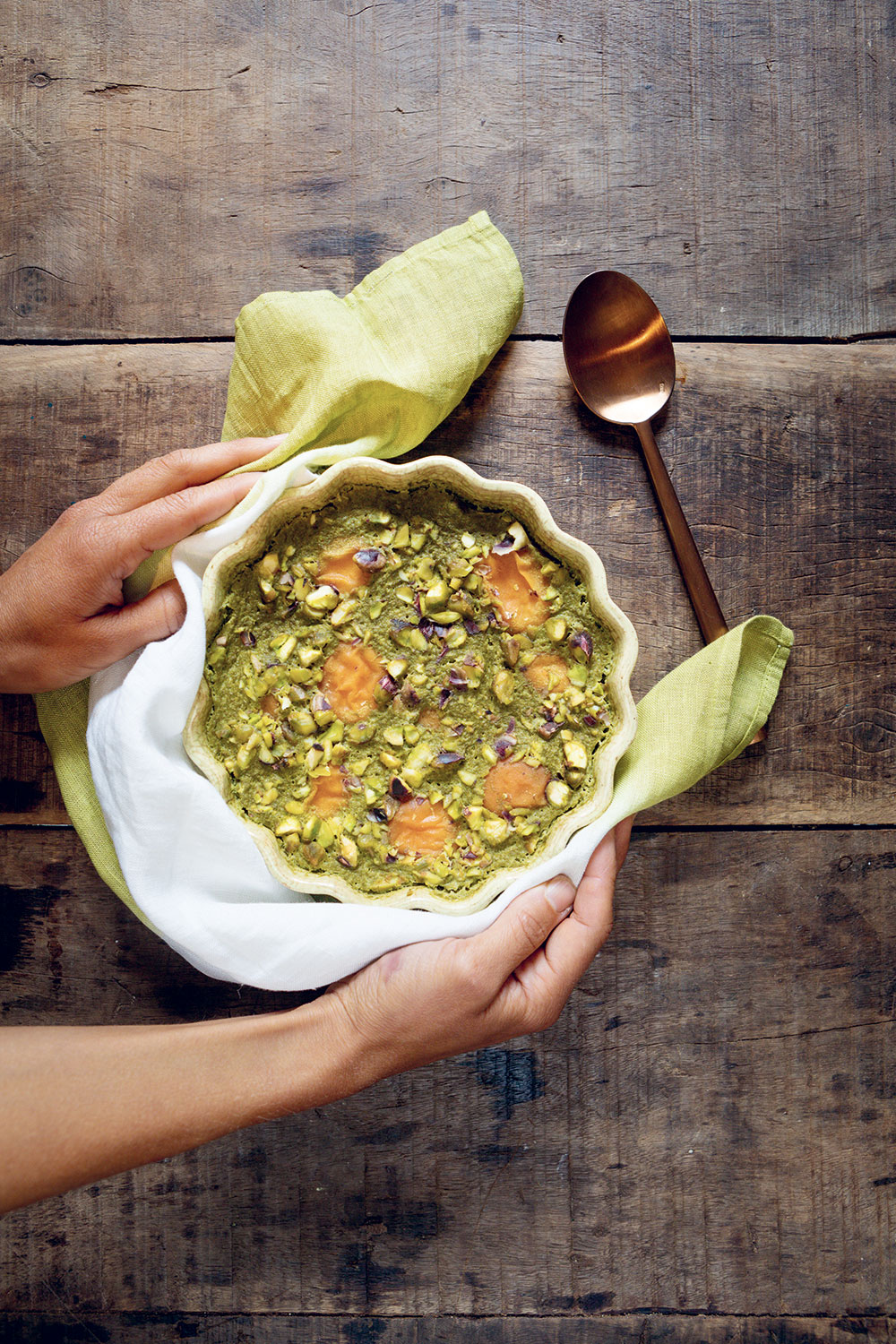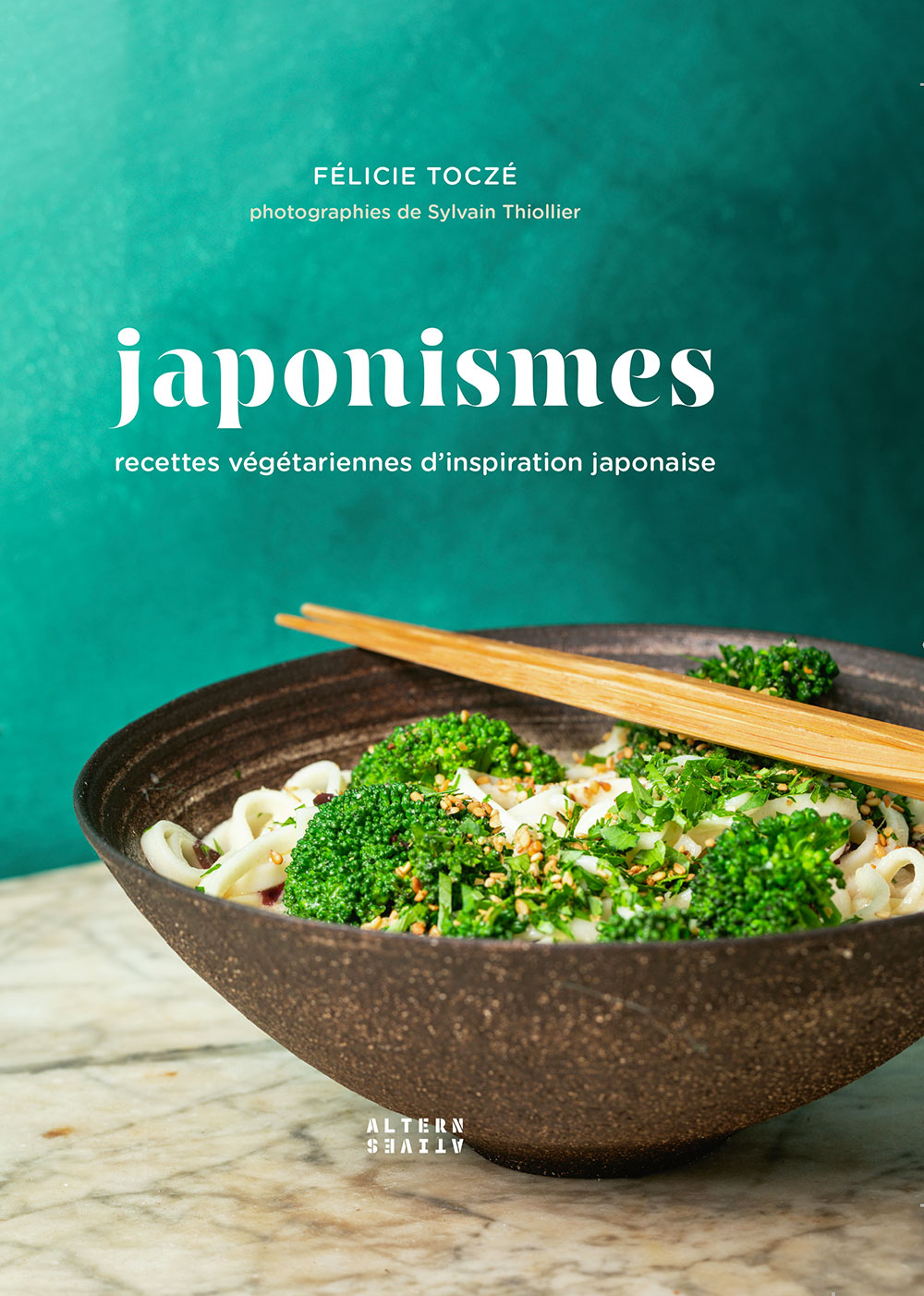Recipe for Matcha and Apricot Clafoutis by Félicie Toczé
This recipe contains no traces of flour. It is replaced by blended rice, making it ideal for those who are gluten intolerant.

© Sylvain Thiollier
In her book Japonismes, Félicie Toczé shares a recipe for matcha and apricot clafoutis. Here, matcha takes centre stage, accompanied by chard leaves to further accentuate the green colour of the garnish. Japonismes compiles 50 sweet and savoury vegetarian recipes inspired by Japan, where the use of seasonal produce is encouraged.
This clafoutis, which can be made using cherries, peaches, or figs, which go particularly well with the bitterness of matcha, has an original twist: it contains no trace of flour. The latter is replaced by rice, which, as the chef explains, ‘makes the cake digestible and light.’
Serves 6
Ingredients
250 ml water
100 g cooked short-grain rice
1 tbsp white almond purée
3 tbsp whole cane sugar
10 apricots
2 eggs
1 tsp matcha
1 chard leaf
Crushed pistachios
Method
In a blender, finely mix the rice, almond purée, sugar, eggs, matcha, and chard leaf with the water.
Grease a round tin roughly 18 cm in diameter and boil the water in a steamer.
Cut the apricots in half and place them in the tin cut-side-down. Pour the mix over them and scatter with pistachios.
Place on the steamer basket and cook for 20 minutes.
If you don’t have a steamer, cook the clafoutis for 20 minutes in an oven preheated to 175°C.
Leave to cool before eating.
Japonismes (2019), a recipe book by Félicie Toczé, is published by Editions Alternatives (not currently available in English).
Félicie Toczé is a consultant, coach, and cook who supports healthy nutrition. She has written several cookery books, including the first edition of Japonismes, published in 2016, and Riz (‘Rice’), which features all the varieties of this cereal.

© Sylvain Thiollier
TRENDING
-
The Tattoos that Marked the Criminals of the Edo Period
Traditional tattoos were strong signifiers; murderers had head tattoos, while theft might result in an arm tattoo.

-
Chiharu Shiota, Red Threads of the Soul
Last year, more than 660,000 people visited the retrospective 'Chiharu Shiota: The Soul Trembles' exhibit at the Mori Art Museum.

-
‘Before Doubting Others, Doubt Yourself. Who Can Truly Say a Dish Isn’t What It Used to Be?’
In ‘A Non-Conformist’s Guide to Surviving Society’, author Satoshi Ogawa shares his strategies for navigating everyday life.

-
The Story of Sada Yacco, the Geisha who Bewitched Europe
Described by Dazed magazine as the first beauty influencer, she has been restored to her former glory since 2019.

-
Ito Jakuchu's Naturalist Paintings
From 15 September until 14 October 2018, the Petit Palais showcased the artist's iconic ‘Images of the Colourful Realm of Living Beings’.





